Global Perspectives: How Different Cultures Are Embracing Lab-Grown Luxury
CVD Diamonds Jewelry – A sustainable diamond with our ethical CVD diamond jewelry. Crafted for quality, affordability, and ethical sourcing. Explore our collection.
CVD Diamonds Jewelry – A sustainable diamond with our ethical CVD diamond jewelry. Crafted for quality, affordability, and ethical sourcing. Explore our collection.
CVD Diamonds Jewelry – A sustainable diamond with our ethical CVD diamond jewelry. Crafted for quality, affordability, and ethical sourcing. Explore our collection.
CVD Diamonds Jewelry – A sustainable diamond with our ethical CVD diamond jewelry. Crafted for quality, affordability, and ethical sourcing. Explore our collection.
CVD Diamonds Jewelry – A sustainable diamond with our ethical CVD diamond jewelry. Crafted for quality, affordability, and ethical sourcing. Explore our collection.
In recent years, there has been a significant shift in consumer preferences towards more sustainable options when it comes to diamonds. This trend is driven by several factors. Firstly, heightened awareness of environmental issues has prompted individuals to seek products that have minimal impact on the planet. Traditional diamond mining often involves land disturbance, water usage, and carbon emissions, leading many consumers to opt for environmentally friendly diamonds like lab-grown diamonds, which have a significantly lower environmental footprint
In today’s jewellery market, the choice between sustainable CVD (Chemical Vapour Deposition) diamonds and mined diamonds is becoming increasingly significant. In this blog, we will explore 10 compelling reasons why opting for sustainable CVD diamonds is the superior choice over traditional mined diamonds.
Here are ten compelling reasons why choosing sustainable CVD diamonds is the way forward:
CVD diamonds are conflict-free diamonds. They are produced in controlled laboratory environments using advanced technology, ensuring that they are free from any association with resource intensive mining practices or the trade conflicts. By choosing CVD diamonds, you can be assured that your purchase has not contributed to human rights abuses or armed conflicts in diamond-producing regions.
CVD diamonds are more affordable diamonds and offer an attractive price advantage compared to mined diamonds. They are typically priced 60 to 85 percent lower than natural diamonds of comparable quality and size. This affordability makes them accessible to a wider range of consumers, allowing more people to enjoy the beauty and luxury of diamonds without breaking the bank.

CVD diamonds are chemically identical to mined diamonds, but their controlled growth process allows superior quality control. They are produced under precise conditions that minimise impurities and inclusions, resulting in diamonds that are often even more flawless and purer than their natural counterparts. This improved quality ensures that CVD diamonds exhibit exceptional brilliance, fire, and clarity, making them highly desirable for jewellery.
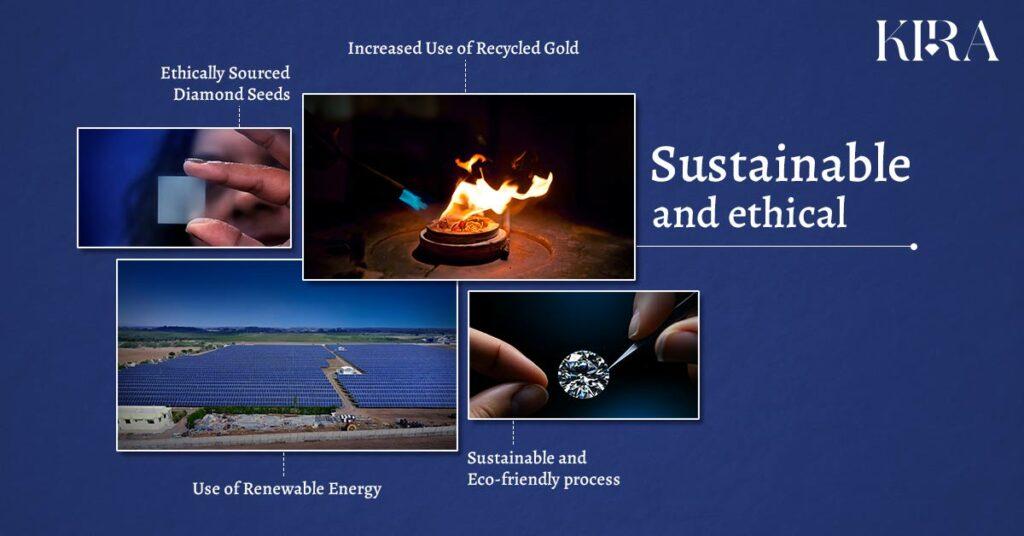
Kira’s commitment to sustainability is reflected in its manufacturing facility in India, which spans 700,000 square feet and is powered by a 25 MW solar plant.
Choosing CVD diamonds supports sustainable practices and ethical sourcing in the jewellery industry. Unlike mined diamonds, which require extensive mining operations that can cause environmental damage and harm local communities, CVDs are sustainable diamonds created using a sustainable and eco-friendly process. They do not contribute to more land & natural resources use, or use Carbon-intensive Processes making them a more environmentally responsible choice

CVD diamonds are grown under controlled laboratory conditions, producing consistent quality across each diamond. Unlike mined diamonds, which can vary in quality and characteristics due to natural variations in geological formations, CVD diamonds offer uniformity and predictability. This reliability ensures you receive a diamond of the highest standards every time, with consistent brilliance, colour, and clarity.

While natural diamonds are primarily known for their white colour, CVD diamonds offer a wide range of colours, including fancy hues like blue, pink, and yellow. These colours are achieved by introducing specific trace elements during the diamond growth process. This variety allows for greater customization and personalisation options, enabling you to create unique and distinctive jewellery pieces that reflect your style and preferences.

By choosing CVD diamonds, you actively support environmental conservation efforts. These diamonds help minimize the environmental impact associated with traditional diamond mining, including land alteration, habitat impact, and carbon emissions. Since CVD diamonds are created in controlled laboratory environments, they use significantly fewer natural resources and generate lower carbon emissions compared to mined diamonds, making them a more sustainable choice for environmentally conscious consumers.
With CVD diamonds, you can enjoy a larger diamond for a more affordable price compared to mined diamonds. The cost savings associated with CVD diamonds allow you to upgrade to a bigger and more impressive stone without exceeding your budget. This means that you can indulge in luxury and extravagance without compromising on quality or value, making CVD diamonds an excellent investment for those seeking maximum impact and visual appeal.
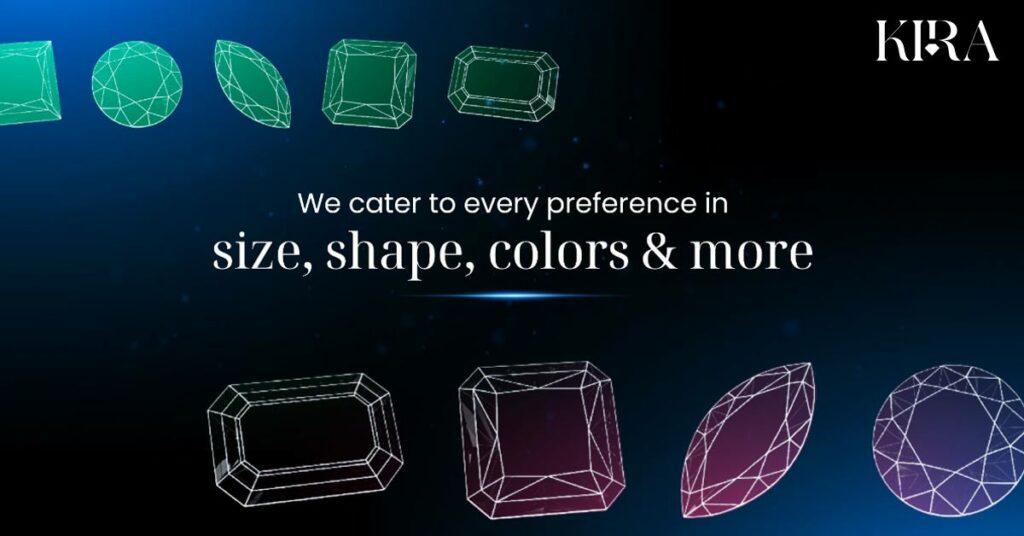
CVD diamonds offer extensive customisation options, allowing you to create unique and bespoke jewellery pieces tailored to your preferences. Whether it’s a specific cut, shape, size, or setting, CVD diamonds can be customised to meet your exact specifications. This flexibility enables you to design one-of-a-kind pieces that reflect your individuality and style, ensuring that your jewellery stands out from the crowd and becomes a cherished heirloom for generations to come.
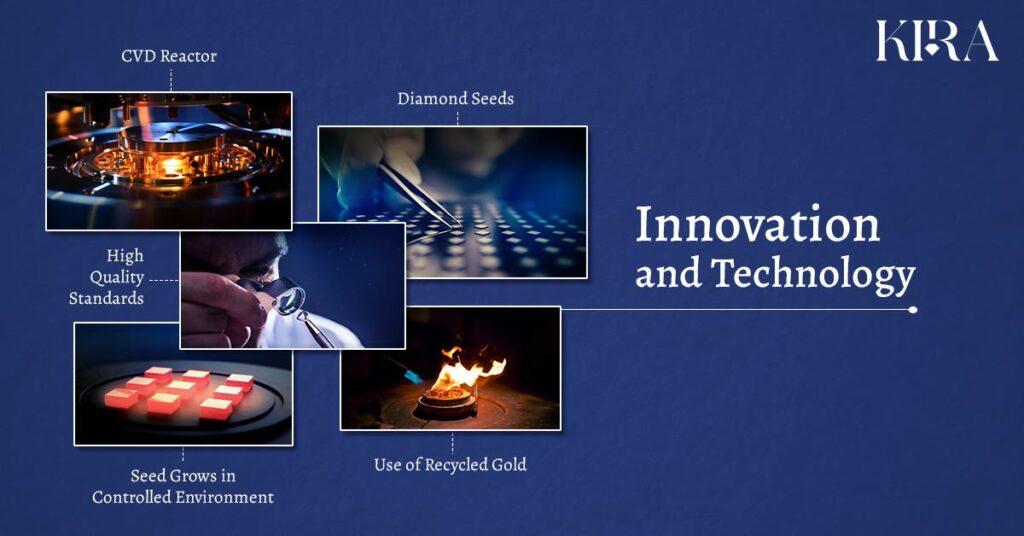
CVD diamonds are produced using advanced scientific techniques that allow precise control over the diamond growth process, unlike mined diamonds. This enables continuous advancements in diamond synthesis and jewellery manufacturing, contributing to the industry’s evolution. By choosing CVD diamonds, you support innovation and progress in the quest for sustainable luxury.
In conclusion, the benefits of choosing sustainable lab-grown diamonds over mined diamonds are undeniable. From ethical and environmental considerations to affordability, quality, and customisation options, lab-grown diamonds offer a superior alternative that aligns with modern values and preferences. By switching to CVD lab-grown diamonds, you acquire a beautiful and valuable gem and support a more responsible and sustainable future for the jewellery industry.
If you want to enhance your retail collection with CVD diamonds, look no further than Kira Diam, the largest producer of CVD lab-created diamonds. Our CVD diamonds are manufactured in a laboratory powered by a 25 MW solar plant, ensuring sustainable and environmentally friendly production practices. Our innovative process uses six times less water than traditional diamond production methods, contributing to conservation efforts while maintaining high-quality standards in diamond manufacturing. Embrace the sustainable revolution in the jewellery industry with us today.
According to a report by The Brainy Insight, the global lab-grown diamond market has surged to unprecedented heights, reaching a staggering value of $10.8 billion in 2022. The industry is expected to grow at a CAGR of 6.7% from 2023 to 2032 to reach $20.6 billion. This monumental figure not only underscores the exponential growth of the lab grown diamond and jewelry industry but also heralds a transformative era in the world of gemstones.
In the wake of this paradigm shift, wholesalers, retailers, and consumers alike are confronted with a monumental choice between two groundbreaking manufacturing processes: Chemical Vapor Deposition (CVD) and High-Pressure High-Temperature (HPHT). As the demand for sustainable and ethically sourced diamonds continues to soar, understanding the intricacies of these cutting-edge technologies becomes paramount. These methods have revolutionised the diamond industry, offering an alternative to natural diamonds with comparable quality and characteristics.
Chemical Vapor Deposition (CVD) is a cutting-edge technology used to grow lab-grown diamonds. In this process, a diamond seed is placed in a vacuum chamber filled with a hydrocarbon gas such as methane. Microwave energy is then applied to heat the gas into a plasma, causing carbon atoms to separate and bond with the diamond seed plate. This results in the growth of diamond layers over days or weeks.
High-pressure High-temperature (HPHT) is another method used to create lab-grown diamonds. This process involves subjecting a diamond seed to immense pressure (around 1 million PSI) and high temperatures (exceeding 1500 degrees Celsius) similar to those found below the Earth’s crust. The pressure and temperature conditions cause carbon atoms to bond and form diamond layers around the seed.
Substitutional nitrogen (Ns) impurity concentration:
The concentration of Ns impurities in CVD diamond is significantly lower compared to HPHT diamond.
Detector Energy Resolution:
The energy resolution of CVD diamond detectors is significantly better compared to HPHT diamond detectors.
Charge Collection Efficiency (CCE) Under positive voltage:
The CCE of CVD diamond detectors is significantly higher compared to HPHT diamond detectors under positive voltage.

In terms of cost, CVD and HPHT diamonds vary based on production methods, equipment requirements, and market demand.
In the current market, both CVD and HPHT diamonds have their own share of demand and popularity.
Both CVD and HPHT diamonds find applications in various industries, including jewelry, electronics, and industrial sectors.
When it comes to scalability and production volume, CVD has an advantage over HPHT.
In terms of technology, CVD and HPHT processes have distinct differences and ongoing advancements.
For wholesale diamond buyers, partnering with reputable lab grown diamond companies is essential. Conducting comparative cost analyses and evaluating quality factors such as purity, clarity, and market demand will aid in making informed decisions. Additionally, staying abreast of market trends and technological advancements will ensure alignment with evolving consumer preferences and industry standards.
At Kira Jewels, we are leading the way in this monumental change in the diamond and the diamond jewelry industry. As the largest grower of CVD lab-grown diamonds globally, we acknowledge the significance of providing eco-conscious and ethically obtained diamonds to our clientele. Our dedication to sustainability goes beyond mere rhetoric; it is deeply embedded in our operations and methodologies.
💎 Biggest Manufacturing Facility
💎 Dedicated to Innovation and Woman Empowerment
💎 Leading the Charge in Production Capacity
Check out our inventory to get a closer look at our range of offerings.
The future outlook for lab-grown diamonds is optimistic, with both CVD and HPHT technologies poised for growth and innovation in the lab-grown diamond industry. However, CVD continues to gain significant traction across the world due to higher purity and quality control, better color & clarity, rapid size and production speed, and more cost-effectiveness as compared to their counterparts.
Kira remains the prime manufacturer of CVD diamonds with our extensive commitment to lab-grown diamond manufacturing. Learn more about our diamond manufacturing practices here.
In today’s diamond industry, a pivotal shift is underway, marked by a growing emphasis on sustainability and ethical sourcing. This shift brings into focus two distinct types of diamonds: lab-grown, particularly those created using Chemical Vapour Deposition (CVD) technology, and traditional natural diamonds.
CVD diamond manufacturing, a modern and innovative process, offers an alternative to the long-established practise of mining natural diamonds. This introduction of sustainable lab grown diamonds has sparked a significant conversation within the industry, especially among businesses, about the environmental and ethical implications of diamond sourcing.
This article delves into the nuances of CVD and natural diamonds, offering insights into making ethical choices in the diamond industry.
Lab Grown Diamonds vs Natural Diamonds: A Sustainability Perspective
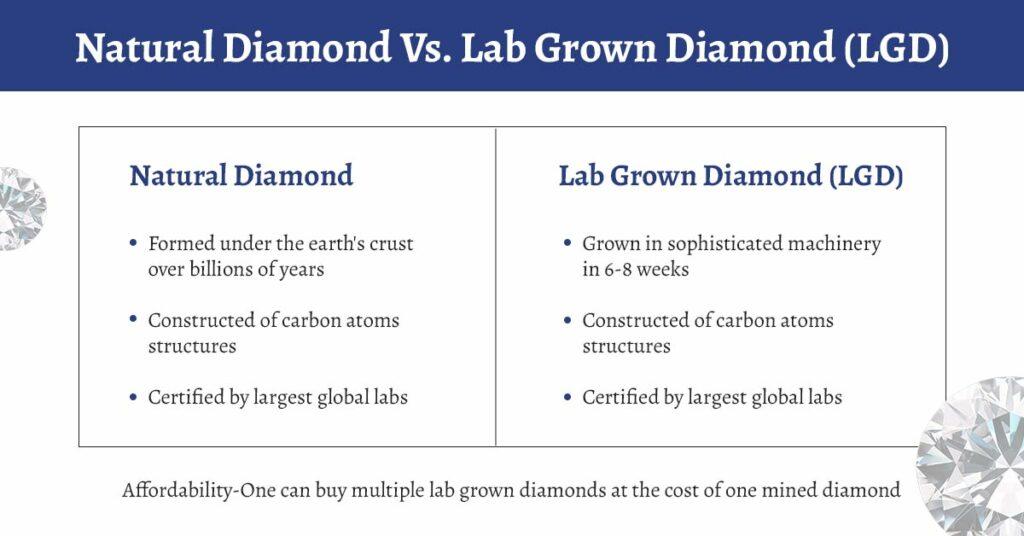
In assessing the sustainability of lab-grown diamonds versus natural diamonds, it’s crucial to understand the distinct processes behind their creation and the resulting environmental impact. Lab-grown diamonds, especially those produced using the CVD method, represent a significant advancement in sustainable practises. This technology allows for the creation of diamonds in a controlled laboratory setting, reducing the need for extensive mining operations.
Natural diamonds, while possessing a unique allure and history, come with considerable environmental costs. The mining process can lead to substantial land and ecosystem disruption, high water usage, and carbon emissions. In contrast, the production of lab-grown diamonds, particularly through CVD, often involves lower emissions and less resource-intensive methods.
The choice between lab-grown and natural diamonds isn’t just a matter of aesthetics or cost; it’s increasingly becoming a decision about ethical and environmental responsibility.
Sustainability in diamond production is a multifaceted issue that encompasses the environmental impact of natural diamond mining and the carbon footprint and energy efficiency of lab-grown diamonds, particularly those created using CVD technology.
The mining of natural diamonds is often associated with significant environmental challenges. Key concerns include
Lab-grown diamonds present a different environmental profile. While they do have a carbon footprint, primarily due to the energy used in the manufacturing process, it is generally lower compared to the extensive carbon emissions associated with natural diamond mining and processing.
The CVD method of producing is increasingly seen as a more energy-efficient alternative.
While natural diamonds carry a legacy and tradition, the environmental and ecological costs are significant. In contrast, lab grown diamonds, particularly those produced via CVD, offer a more sustainable alternative with a lower environmental impact, marking a progressive step in the diamond industry.
The utilization of resources in the production of lab-grown diamonds compared to natural diamonds presents a stark contrast, especially in terms of land use, water consumption, and the impact on ecosystems.
The ethical considerations in the diamond industry are crucial, encompassing issues like conflict diamonds, labor practices, and social responsibility.
The history of conflict diamonds is a troubling aspect of natural diamond mining. These diamonds, mined in war zones, have been used to fund conflicts, leading to severe human rights abuses.
In contrast, the production of sustainable lab grown diamonds is generally associated with fairer labor practices. These controlled laboratory environments often ensure safer working conditions, adhering to higher standards of occupational health and safety compared to traditional mining settings.
Initiatives and policies are being developed to promote ethical practices, such as ensuring traceability, respecting labor rights, and minimizing environmental impacts. Both natural and lab-grown diamond sectors are engaging in efforts to enhance their ethical standards, reflecting a growing awareness of social responsibility in the industry.
When it comes to diamond production, energy consumption plays a crucial role in determining the environmental impact. Let’s take a closer look at the energy usage in both natural and lab-grown diamond production.
Natural diamond mining is energy-intensive involving the operation of heavy machinery. In contrast, lab-grown diamond production requires electricity as its primary energy source. While energy usage can be substantial, it is generally lower than that of natural diamond mining.
To reduce the environmental impact of lab-grown diamonds further, some producers are turning to renewable energy sources:
“Kira leads the charge in sustainable energy adoption by harnessing 25 megawatts of solar power, ensuring their diamond production is powered by 100% renewable energy.“

The diamond industry is on a journey towards carbon-neutral production:
Waste management in the diamond industry plays a crucial role in assessing its overall environmental impact and sustainability. Let’s delve into the waste generated, recycling practices, environmental consequences, and the importance of certifications and traceability.
Natural diamond mining generates substantial waste, including rock and soil removed during excavation. This waste, known as overburden, can be extensive in scale, leading to significant land disturbances. Additionally, there is waste generated from the processing of mined diamonds, such as tailings and water contamination, which poses environmental challenges.
In contrast, production of sustainable lab-grown diamonds, especially CVD, places a greater emphasis on sustainable waste management. Many lab-grown diamond manufacturers prioritize recycling and reusing materials, reducing waste generation. This sustainable approach aligns with environmental stewardship and responsible resource utilization.
Certifications like the Kimberley Process are vital in the diamond industry, ensuring ethical and sustainable practices. They prevent the trade of conflict diamonds, promoting transparency and accountability.
Tracing the origins of diamonds, both natural and lab-grown, is a complex but crucial task. In the case of natural diamonds, tracing them back to their sources can be challenging due to the intricate and often convoluted supply chain. However, advancements in technology, particularly blockchain, are revolutionizing traceability.
Blockchain provides an immutable record of a diamond’s journey, allowing for transparent documentation of its origin, cutting, and polishing processes. This not only enhances accountability but also helps combat the issue of conflict diamonds.
For lab-grown diamonds, traceability is comparatively more straightforward, given their controlled and documented production process. However, challenges still exist, particularly in distinguishing between lab-grown and natural diamonds in the market. Innovative solutions like laser inscriptions and blockchain-based tracking are being employed to ensure accurate traceability.
In summary, certifications like the Kimberley Process and advancements in traceability technology are pivotal in guaranteeing the ethical and sustainable sourcing of diamonds. They empower consumers to make informed choices and support the industry’s shift towards greater transparency and responsibility.
Consumer awareness in the diamond industry is a pivotal driver of sustainable practices and ethical choices.
It’s crucial to stress the importance of informed decision-making among consumers. Understanding the ethical and environmental implications of their choices empowers consumers to make decisions that align with their values. This education can come from various sources, including reputable jewellers, online resources, and industry initiatives, to ensure that consumers have access to accurate information.
Guiding consumers on how to identify and select sustainable diamond options is equally essential. This involves looking for certifications, such as Kimberley Process certification, which ensures conflict-free sourcing. Additionally, consumers can opt for sustainable lab-grown diamonds, particularly those produced using eco-friendly methods and renewable energy sources. These choices contribute to a more environmentally conscious and responsible diamond industry.
Consumer awareness is a catalyst for change in the diamond industry. By making informed choices and selecting sustainable options, consumers can promote ethical practices and encourage the industry to prioritize sustainability and transparency.
In examining cost and market trends in the diamond industry, two critical aspects come to the forefront: economic considerations and market trends, particularly in the context of lab-grown vs natural diamonds.
The global lab-grown diamonds market was valued at USD 10.8 billion in 2022, growing at a CAGR of 6.7% from 2023 to 2032. The market is expected to reach USD 20.6 billion by 2032 (Source -thebrainyinsights)
Market trends in the diamond industry are influenced by evolving consumer preferences and demands. Lab-grown diamonds, with their reduced environmental impact, have gained popularity among consumers seeking eco-friendly options. 70% of millennial consumers are now eyeing lab-grown diamonds, marking a huge shift in market demands.
When comparing lab-grown vs natural diamond price, it’s essential to consider the factors influencing the pricing dynamics. Lab-grown diamonds typically come with a price advantage, offering consumers a more affordable choice. This pricing difference can vary based on market conditions and the specific attributes of the diamonds.
However, it’s important to emphasize that while lab-grown diamonds may be more budget-friendly, they offer a compelling combination of value and sustainability.
In conclusion, the choice between lab-grown and natural diamonds extends beyond aesthetics and budget considerations. It encompasses vital ethical, environmental, and sustainability factors that resonate with modern consumers and businesses alike.
At Kira Diam, we stand at the forefront of this transformative shift in the diamond industry. As the world’s largest grower of lab grown diamonds, we recognise the importance of offering environmentally responsible and ethically sourced diamonds to our customers. Our commitment to sustainability extends beyond mere words; it’s ingrained in our practices and processes.
In this dynamic landscape, the diamond industry is witnessing a remarkable evolution, driven by a growing awareness of sustainability and ethics. As we move forward, it is our hope that this journey towards more responsible diamond production and consumption continues to gain momentum, ensuring a brighter and more sustainable future for all.
Kira, as a leading lab grown diamond jewelry manufacturer, is proud to announce the unveiling of our brand new jewelry line at the JCK jewelry show in 2024. This highly anticipated event marks a significant milestone for us as we continue to innovate luxury with sustainability. In this blog post, we’ll delve into the details of our new collection, the significance of launching at JCK Las Vegas, and the ethical values that drive our design philosophy.
At Kira, we’re committed to redefining luxury through sustainable practices. Our brand new jewelry collection embodies this ethos, featuring exquisite designs and styles. JCK Las Vegas serves as the perfect platform for us to introduce our latest creations to the world, showcasing the innovative ways in which lab grown diamonds are revolutionizing the jewelry industry. With the launch of both Kira Classics and Kira Luxe, offering a variety of jewelry for different audiences and needs.
Our latest collection at JCK 2024 is a testament to Kira’s dedication to craftsmanship and innovation. Each piece is meticulously crafted to perfection, showcasing a variety of diamond cuts including round, oval, radiant, emerald, pear, marquise, cushion and princess cuts. Our jewelry line-up of Classics & Luxe features a range of designs, from classic elegance to contemporary sophistication, catering to every taste and style preference. With CVD lab-grown diamonds at the heart of our creations, our collection offers unparalleled brilliance and quality, but yet keeping things affordable!
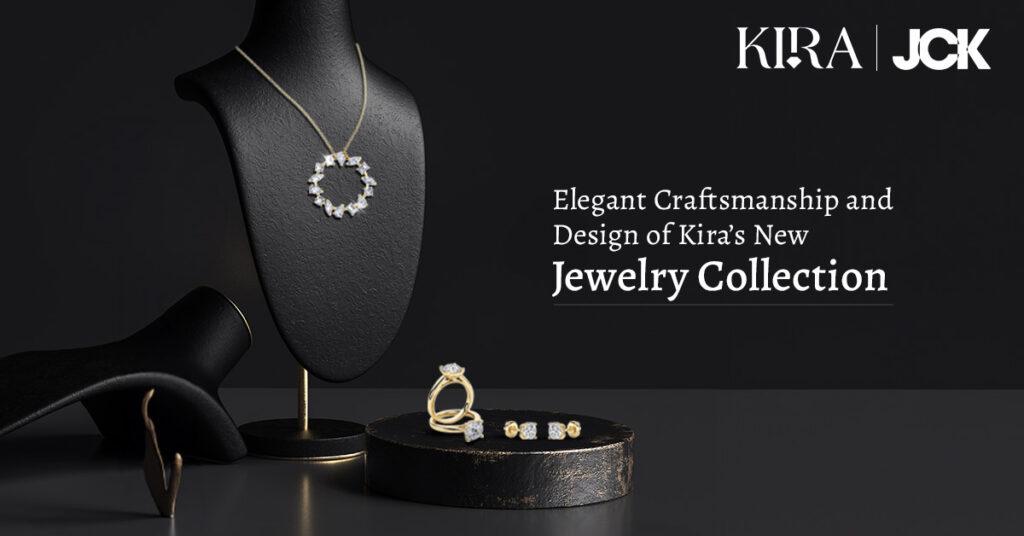
The design philosophy behind Kira’s LGD inventory is inspired by nature, sustainability, and timeless beauty. Each design reflects our commitment to ethical sourcing and responsible practices, ensuring that every piece tells a story of sustainability and elegance. Whether it’s the delicate curves of an oval-cut diamond or the geometric precision of a princess-cut stone, our designs celebrate the inherent beauty of lab-grown diamonds while promoting environmental guardianship. Additionally, Our selection also includes solitaire studs, elegant hoops, necklaces, bracelets, and fashion-forward pieces to complement any wardrobe.
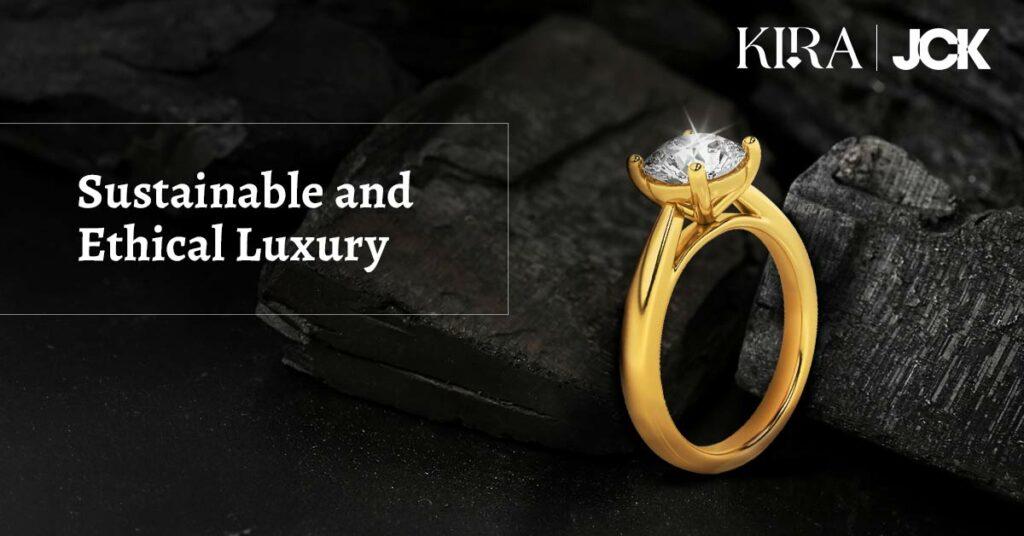
In today’s ever-evolving world, sustainability is no longer just a buzzword – it’s a way of life. As the largest producer of CVD lab-grown diamonds, Kira is at the forefront of this movement, offering a popular sustainable alternative to traditionally mined diamonds. We prioritize transparency in our supply chain, providing consumers with information about the origin and production process of our diamonds. This transparency builds trust and allows consumers to make informed choices. We adhere to internationally recognized certifications and standards for ethical and sustainable practices in the diamond industry.
Our CVD diamonds are crafted in our 700,000 sq.ft laboratory supported by our very own 25 MW solar facility, reflecting our commitment to sustainable and eco-conscious production. Our pioneering approach consumes six times less water than conventional diamond manufacturing methods, supporting conservation initiatives while upholding exceptional quality standards. This ensures that our products meet rigorous environmental and social criteria.
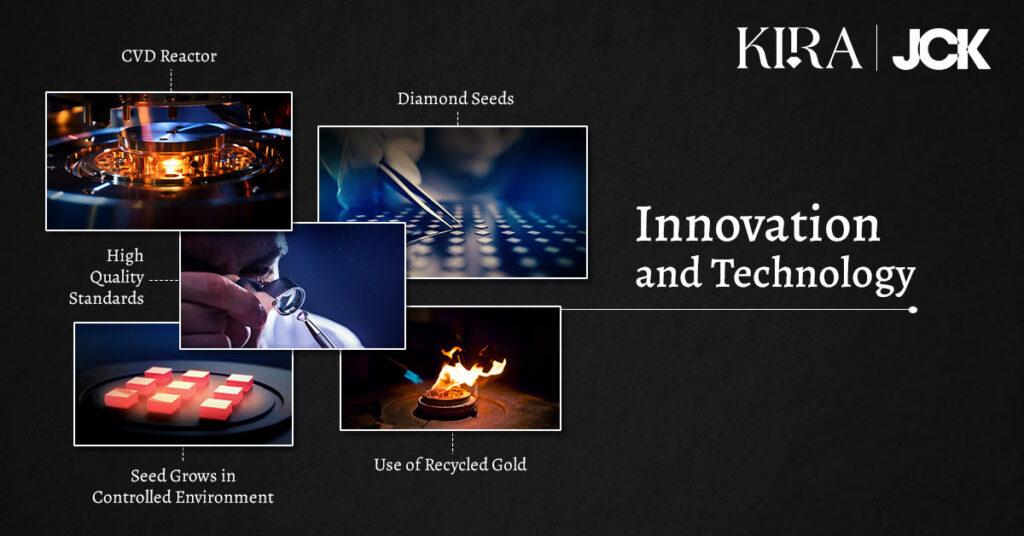
Ever wondered about the creative process behind Kira’s stunning lab-grown diamond jewelry? We sat down with our lead designer to gain insights into the designer’s creative process and discuss future trends in jewelry design. From drawing inspiration from the wonders of nature to integrating state-of-the-art technology, our groundbreaking designs are what distinguishes us within the industry.
At the heart of every Kira creation lies a devoted team and advanced manufacturing facility. Our facility encompasses the entire process from growth to finishing and employs over 5000 highly skilled workers, with a significant portion being women. This reflects Kira’s core values of inclusivity and empowerment
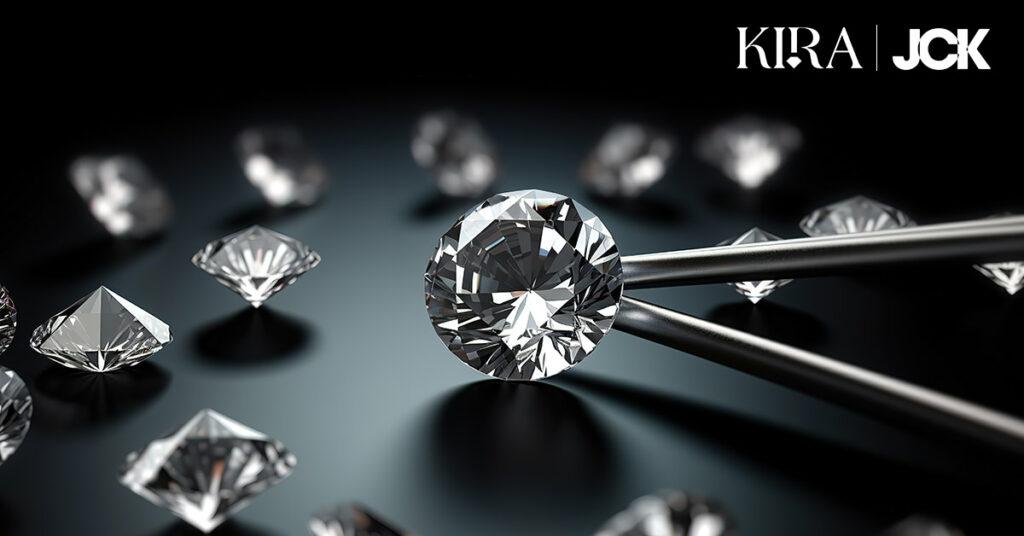
At Kira, we take pride in our certifications and quality assurance measures, ensuring that every piece of jewelry meets the highest standards of craftsmanship. We are committed to transparency and traceability in our supply chain. We meticulously track the origin and journey of each diamond, from the laboratory to the retailer’s hands. This ensures accountability and allows customers to make informed choices about their purchases. We offer a diverse selection of diamonds, ranging from 0.15 to over 10 cts in size, ensuring there’s something for every preference and occasion. With over 120,000 certified stones available, customers can explore a vast array of shapes and colors, providing endless possibilities to find the perfect diamond for their unique needs.
Kira’s lab grown diamond jewelry is eco-friendly due to its comprehensive approach to sustainability. As the world’s largest grower of CVD lab-grown diamonds, we operate state-of-the-art facilities in Surat, India, where diamonds are cultivated using power from our very own 25 MW Solar Plant!. By eliminating the need for traditional diamond mining, Kira significantly reduces environmental impact, conserving natural resources and minimizing carbon emissions. From sourcing the seed to crafting exquisite jewelry, we ensure meticulous attention to detail at every stage of production, providing customers with an eco-conscious and ethically sourced alternative to mined diamonds.
CVD (Chemical Vapor Deposition) diamonds are a type of lab-grown diamond produced using a specific manufacturing process. Unlike other methods like HPHT (High Pressure High Temperature), CVD diamonds are formed by depositing carbon atoms onto a substrate in a controlled chamber. This process allows us for the precise control of diamond seed growth, resulting in diamonds with exceptional purity and consistency. CVD diamonds often exhibit distinct characteristics such as superior clarity and color, making them highly sought after for use in jewelry and various industrial applications.
Kira’s Jewelry ensures the quality of its diamonds through a rigorous quality control process at every stage of production. From the sourcing of diamond seeds to the growth and manufacturing process in their state-of-the-art facilities, each step is carefully monitored and managed by skilled professionals.
Additionally, During the grading process, the diamond’s quality and characteristics are evaluated based on factors like Carat Weight, Colour, Clarity, and Cut, known as the 4Cs. With meticulous attention to detail and quality checks, we ensure every diamond we manufacture stands the test of high-quality standards.
To learn more about our exclusive collection, please visit our LGD Inventory page.
CVD Diamonds Jewelry – A sustainable diamond with our ethical CVD diamond jewelry. Crafted for quality, affordability, and ethical sourcing. Explore our collection.
WhatsApp us
